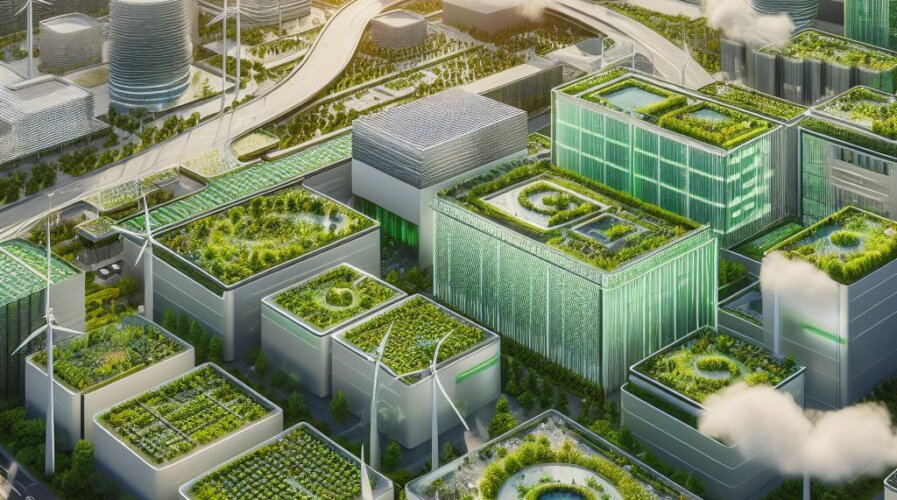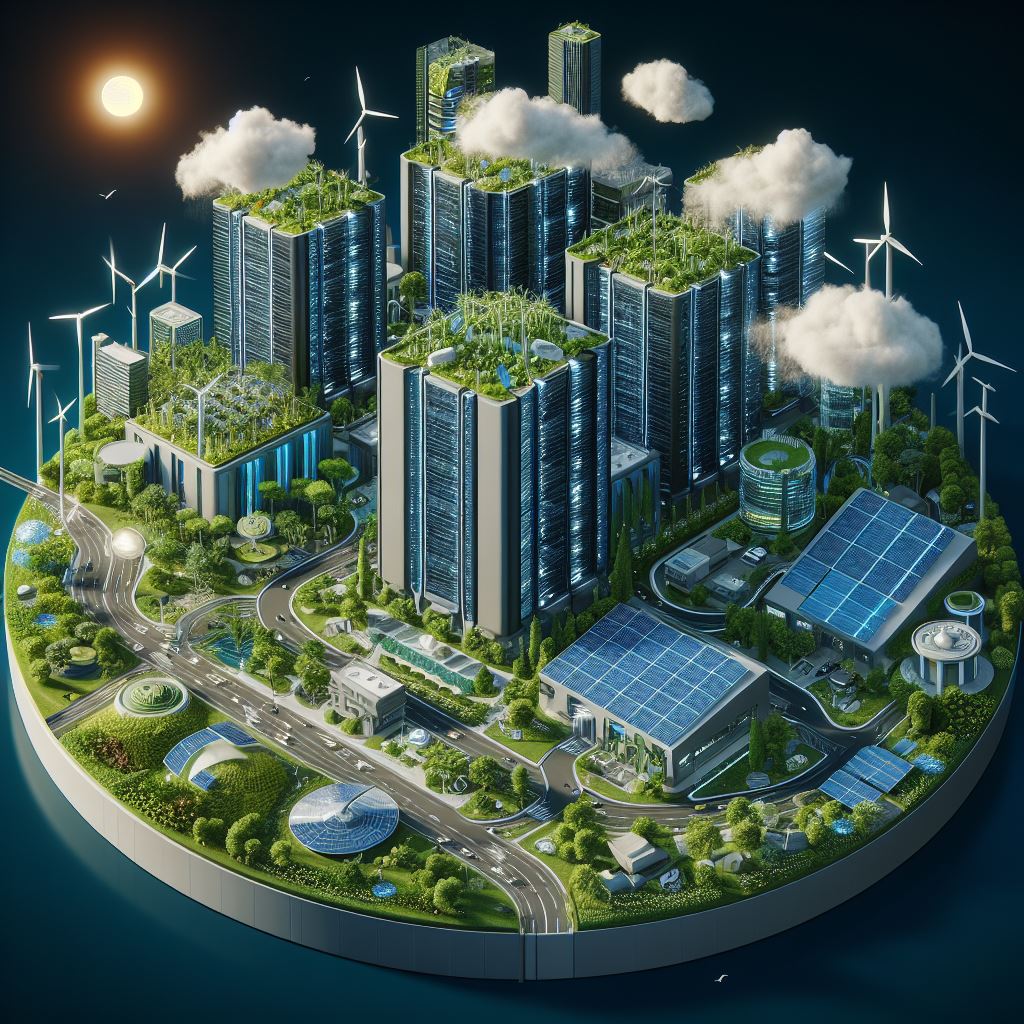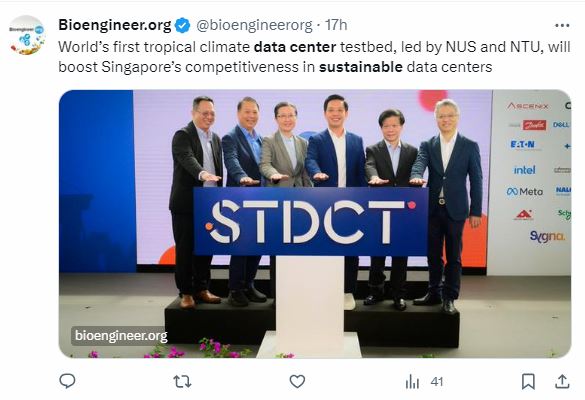
Alibaba Cloud operates 89 data centers worldwide, which support Alibaba’s 30 cloud regions. (Image generated by AI)
Creating a recipe for sustainable data centers
The data center industry in Southeast Asia is a fast-growing and dynamic sector that provides services like data storage, processing, networking, and cloud computing to enterprises and consumers. The region is seeing a wave of investments in the sector, with digital infrastructure as an emerging asset class thanks to the steady growth of the digital economy.
Data centers are growing at an high rate with the ‘global data sphere’ predicted to grow in storage capacity from 33 zettabytes in 2018 to 175 zettabytes by 2025, according to IDC. Some of the factors driving the growth of the data center industry in Southeast Asia include the rising demand for data storage and cloud services, especially from e-commerce, gaming and social media. The increasing adoption of AI also requires high-performance computing, data analytics capabilities via low latency and high bandwidth connections.
However, the data center industry in the region is still challenged by high operational costs and the risk of power outages and, therefore, downtime, such as the power outage in Singapore recently. The shortage of skilled talent and expertise in data center operations and management, plus the high staff turnover rate alongside competition for talent from other regions are additional challenges.
New investments in data centers are focused on green and sustainable practices. These can reduce the carbon footprint and operational costs of data centers, and enhance their social and environmental profiles.
The emergence of new technologies and innovations, such as liquid cooling, modular and prefabricated data centers, and software-defined data centers help improve the performance, flexibility, scalability, and security of data centers, and lower their capital and operational expenditures (CAPEX & OPEX).

Singapore introduced one of the world’s first sustainability standards tailored for data centers (Image generated by AI)
Alibaba Cloud data centers
Alibaba Cloud operates 89 data centers worldwide, creating coverage of 30 regions. Regions contain clusters of data centers and offer high availability, robust fault tolerance, and a minimal chance of concurrent failure.
Alibaba claims its Cloud data centers:
- Provide low latency and high bandwidth connectivity in different regions and countries, and access to Alibaba Cloud’s global network of CDN nodes.
- Comply with local standards and regulations for data protection, privacy, security, and taxation, and offer local support and expertise for customers.
- Adopt green and sustainable practices, like using renewable energy sources, energy-efficient equipment, waste heat recovery, and water conservation to reduce the environmental impact and operational costs of data centers.
- Leverage liquid cooling, modular and prefabricated data centers and software-defined data centers to improve the performance, flexibility, scalability, and security of data centers.
Alibaba Cloud picked Singapore for its first international data center and has three availability zones in the country. Alibaba Cloud is also available in Thailand, Malaysia, Indonesia and the Philippines.

World’s first tropical climate data center testbed, led by NUS and NTU, will boost Singapore’s competitiveness in sustainable data centers
Data centers in Singapore
Singapore’s ambitious goal of achieving net-zero emissions by 2050 faces a significant obstacle in the rapid expansion of its digital economy, which drives a growing demand for data centers. In 2020, data centers accounted for 1.4% of global greenhouse gas emissions, emitting over 330 million metric tons of CO2. They also consumed nearly 10% of the Singapore’s electricity, according to Singapore’s Ministry of Trade and Industry.
“As a leading data hub in Southeast Asia, Singapore grapples with the environmental implications of data centers, particularly in its tropical climate where substantial energy is required for cooling. A recent record-breaking temperature of 37 degrees Celsius in May underlines the urgency of addressing this challenge,” stated Dr Derek Wang, General Manager, Alibaba Cloud Singapore.
The Singapore Government, through the Infocomm Media Development Authority (IMDA), has introduced one of the world’s first sustainability standards for data centers in tropical climates earlier this year. Dr Wang believes the upcoming pilot trials, slated to commence before the end of 2023, signify a step towards aligning digital innovation with climate commitments.
“There will be several considerations for Singaporean businesses, especially the data center operators and stakeholders when looking to progress these goals and adopt green data centers. These encompass optimizing the power efficiency of IT components, embracing advanced cooling technologies, and harnessing the potential of AI and data analysis for improved energy management, including adaptation to extreme weather events and evolving dynamics over time,” said Dr Wang.

Can liquid cooling make data centers sustainable? (Image generated by AI)
Keeping data centers cool
For Dr Wang, there are several approaches to maintain optimal temperatures in data centers. While air conditioning offers relief to domestic indoor settings, data centers present unique challenges and Singapore’s humid tropical climate adds complexity to the issue.
“Some argue that the traditional method of setting a fixed temperature and venting warm air into the environment is wasteful. Singapore’s equatorial conditions and the relatively high cost of cooling compound this issue, placing data center hosting at a competitive disadvantage. Therefore, prioritizing cost-effective and energy-efficient cooling methods becomes crucial,” explained Dr Wang.
Dr Wang said a more sustainable alternative for efficient data center cooling involves moderating room temperatures to a baseline level to minimize the need for excessive cooling.
“Servers generate significant local heat, and by strategically distributing the heat-generating hardware across the data center, or even among multiple rooms, room temperatures can be raised moderately without compromising equipment functionality. This approach substantially reduces overall cooling requirements and lessens the environmental impact.
This is where liquid cooling emerges as a highly efficient alternative to traditional air conditioning. Liquid cooling technology can reduce energy consumption by a remarkable 70%. With innovative cooling solutions, data centers can achieve a Power Usage Effectiveness (PUE) of 1.09, a significant improvement compared to the previous benchmark of 1.2 typically achieved with air conditioning systems,” said Dr Wang.

Liquid cooling technology can reduce energy consumption by a remarkable 70% (Image generated by AI)
Sustainability through data and AI
The data center of the future will not only power AI but also be run with AI. Machine learning-enabled data analytics technologies can forecast, control, and manage the carbon footprint of data centers. Cloud-based technology allows operators to identify anomalies quickly and respond accordingly via automation or human intervention.
Alibaba Cloud has a SaaS tool that does just that. The Energy Expert lets data center operators and enterprises track and process environmental real-time data. It can also map out emission strategies, set targets, and limit environmental impact.
“AI is also helpful in forecasting a data center’s future energy load, as it can fluctuate widely depending on the time of day, weather and special events. Another factor is fluctuating energy output from renewables such as solar panels and wind turbines, which generate power at a different cost than consumers on the public grid. Again, AI-based algorithms can optimize load balancing to maximize the use of renewable energy,” said Dr Wang.

It’s all about creating a sustainable future. (Image generated by AI)
Migrate to negate
Dr Wang stated that intelligent algorithms enable cloud operating systems to achieve more efficiency by integrating thousands of servers around the world into a virtualized supercomputer, a situation that improves server resource utilization by as much as 40%, creating significant cost reductions.
Automatic load balancing and optimization can automatically move AI applications to systems that have appropriate hardware. Dr Wang describes this migration to the cloud as one that leads to scalable and flexible infrastructures via which cost savings can be achieved. It also reduces the mean CO₂ footprint as energy use is optimized and priority given to sustainable energy sources.
“Singapore’s unwavering commitment to green data centers serves as a beacon of inspiration for the global community. It’s crucial to emphasize that adopting green data centers doesn’t entail any trade-offs in terms of performance, reliability, or security. Instead, it represents a dedicated pledge to operate with enhanced efficiency on our journey toward carbon neutrality.
As we tread this path, we strike a harmonious balance between technological innovation and environmental responsibility, forging a sustainable digital future that flourishes while safeguarding our planet for generations to come,” concluded Dr Wang.
READ MORE
- Safer Automation: How Sophic and Firmus Succeeded in Malaysia with MDEC’s Support
- Privilege granted, not gained: Intelligent authorization for enhanced infrastructure productivity
- Low-Code produces the Proof-of-Possibilities
- New Wearables Enable Staff to Work Faster and Safer
- Experts weigh in on Oracle’s departure from adland




